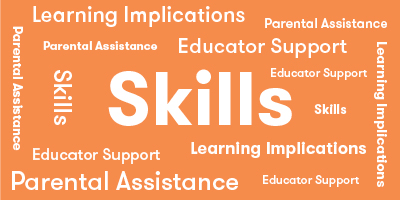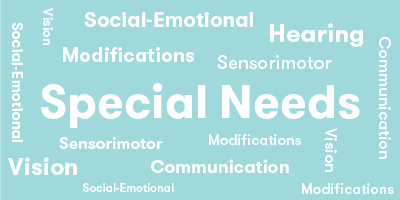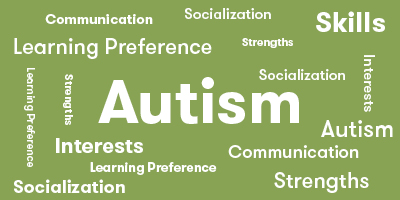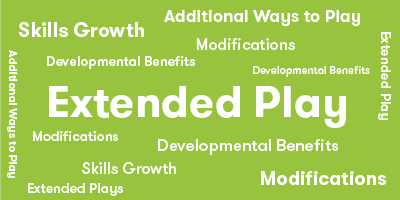




Collapsible content
Our variation of the classic “Go Fish” game that features some of the tropical reef fish found in our oceans.
You can play Chums with 2-6 players, ages 4 and up!
Chums is a great game for developing Color and Shape Recognition Skills, as players look at the shapes and colors on the corners of their cards and try to collect other cards with the same shapes and colors.
Chums also helps develop Matching Skills as players look at the colors, shapes and fish on their cards and try to collect sets of four matching card by asking other players or by taking cards from the draw pile.
To set up the game, shuffle the deck and give five cards to each player.
If there are only two players, give each player seven cards.
Players should look at their cards, but not show the other players.
Place the remaining cards facedown creating a draw pile that everyone can reach.
The object of Chums is to collect sets of four matching cards by taking turns asking the other players for cards from their hands. Players try to collect as many sets as possible. The player that has collected the most sets of four when the cards run out wins!
To play the game, players take turns asking other players for a specific card. If they have the card you are asking for, they give you that card. If they have more than one of that card, they give you all of them.
Cards can be matched by the shape and shape color in the corners of the card, or by the fish. You may also hold up the card you want to match and show it to other players.
If you got what you asked for, then you may ask another player for another card, either the same type or different.
For Example: Player 1 has a Blue Triangle (Mandarinfish) in their hand and asks Player 2 for a Blue Triangle (Mandarinfish). Player 2 has two Blue Triangle cards and gives them both to Player 1. Player 1 now asks Player 3 for a Yellow Triangle (Lion Fish).
If you ask someone for a card and they do not have that card, you then take the top card from the draw pile and hope it might be what you were looking for.
For Example: Player 1 asks Player 3 for a Yellow Triangle (Lion Fish). They do not have any in their hand so Player 1 will take the top card from the draw pile.
If the card taken from the draw pile is the card you were searching for, show it to everyone, place it in your hand and take another turn by asking a player for another card.
If the card is not the card you were searching for, add it to your hand and your turn ends. Play continues with the person on your left.
As soon as you collect a matching set of four fish, show the cards to all players and place them face down in front of yourself.
The game ends when one player has no cards left in their hand or when the draw pile runs out. The winner is the player who has collected the most sets of four fish (also called schools of fish)
Get chummy with some fun tropical reef fish and see how many different fish you can chum around with when you play Simply Fun’s Chums.


Not available for this product


Explore
What Does Child Do To Use Skill In The Game?
Players look at their hand throughout the playing Chums to look for cards to play and organize them as part of planning to collect four-of-a-kind.
How Parents Can Assist Learning
No special adult support is required. However, children may look only at color and shape of objects in the corners of cards to make a match. Parents can enhance the fun by encouraging them to look at the fish on the cards.
Learning Implications and Educator Support
No special adult support is required. However, children may look only at color and shape of objects in the corners of cards to make a match. Educators can enhance the fun by encouraging them to look at the fish on the cards.
Determine
What Does Child Do To Use Skill In The Game?
Players need to decide what card to ask for, and whether they have a card that they have been asked for.
How Parents Can Assist Learning
No special adult support is required. However, children may look only at color and shape of objects in the corners of cards to make a match. Parents can enhance the fun by encouraging them to look at the fish on the cards.
Learning Implications and Educator Support
Chums is good for developing comparing and visual matching skills. However, children may look only at the shapes and colors to make a match. Educators can enhance the visual matching skills and the fun by encouraging them to look at the pictures on the cards.
Matching two qualities is more advanced than matching just one, therefore, educators may need to remind younger children that they need to ask for both a color and shape.
Compare
What Does Child Do To Use Skill In The Game?
While playing Chums, if players can remember what other players have asked for, they+H7 may be able to predict what others are trying to collect.
How Parents Can Assist Learning
No special adult support is required. However, children may look only at color and shape of objects in the corners of cards to make a match. Parents can enhance the fun by encouraging them to look at the fish on the cards.
Learning Implications and Educator Support
No special adult support is required. However, children may look only at color and shape of objects in the corners of cards to make a match. Educators can enhance the fun by encouraging them to look at the fish on the cards.
Remember
What Does Child Do To Use Skill In The Game?
While playing Chums, if players can remember what other players have asked for, they may be able to make more strategic choices of cards to ask for.
How Parents Can Assist Learning
While no special adult support is required, you may want to encourage children to pay close attention to the cards others are playing. If you notice a child could be playing a more advantageous card, ask the child "Do you remember which color and shape the other players have asked for the most?" and "Based on that, what type of cards do you think they have the most?"
Learning Implications and Educator Support
Chums can help children develop focus and attention.
Educators may want to ask children to explain their play, in order to demonstrate if they are paying close attention and their reasoning for their play. This also offers opportunity to provide guidance, if needed, to improve the child's ability to predict what others are trying to collect and which card to ask for that can result in multiple cards being handed over.
Predict
What Does Child Do To Use Skill In The Game?
While playing Chums, if players pay closest attention to what other players have asked for, they may be able to predict what others are trying to collect.
How Parents Can Assist Learning
While no special adult support is required, you may want to encourage children to pay close attention to the cards others are playing. If you notice a child could be playing a more advantageous card, ask the child "Do you remember which color and shape the other players have asked for the most?" and "Based on that, what type of cards do you think they have the most?"
Learning Implications and Educator Support
Chums can help children develop focus and attention.
Educators may want to ask children to explain their play, in order to demonstrate if they are paying close attention and their reasoning for their play. This also offers opportunity to provide guidance, if needed, to improve the child's ability to predict what others are trying to collect and which card to ask for that can result in multiple cards being handed over.
Plan
What Does Child Do To Use Skill In The Game?
While playing Chums, if players can remember what other players have asked for, they can help decide what to ask for on the player's next turn to get the most cards possible.
How Parents Can Assist Learning
While no special adult support is required, you may want to encourage children to pay close attention to the cards others are playing. If you notice a child could be playing a more advantageous card, ask the child "Do you remember which color and shape the other players have asked for the most?" and "Based on that, what type of cards do you think they have the most?"
Learning Implications and Educator Support
Chums can help children develop focus and attention.
Educators may want to ask children to explain their play, in order to demonstrate if they are paying close attention and their reasoning for their play. This also offers opportunity to provide guidance, if needed, to improve the child's ability to predict what others are trying to collect and which card to ask for that can result in multiple cards being handed over.
*Data compiled from CCSSI ELA Standards, WA Science Standards, and Washington Social Studies Standards


Cognitive
Suggestions for How to Modify Play Experience
Halve the number of cards by eliminating two of each fish. This will reduce the number of cards the child has to mentally process. Children who can match shapes (circle, square, triangle diamond, heart) should be able to play Chums. Try playing the game where the person who gets the most pairs wins.
Make a card holder from a piece of stiff paper, so that the child can line the cards up so the whole card can be seen. This will allow the child to match fish as well as shapes.
Help children arrange their cards so that matches are together and easier to see.
Communication
Suggestions for How to Modify Play Experience
Children can play without being able to talk. They can point to the aspect, shape or fish, they are matching. Encourage the child to label the shapes that match by imitating another player who labels the card requested.
Have an older child or adult name the fish that is matched and point it out on the information sheet, labeling a key feature such as black stripes or looks like a lions mane.
Sensorimotor
Suggestions for How to Modify Play Experience
Children with fine motor concerns may have difficulty holding and pulling cards. Use a card holder that allows the child to have control of their cards. Someone may have to help them place the card they put into their card holder.
Make a card holder from a piece of stiff paper folded horizontally, so that the child can line the cards up so the whole card can be see. This will allow the child to match fish as well as shapes.
Social Emotional/Behavioral
Suggestions for How to Modify Play Experience
A child with low frustration tolerance may have difficulty watching others gain sets of matches when they are not able to. Talk about how drawing cards give the player another opportunity to make a match. Point out when other players have to draw cards as well.
Help children arrange their cards so that matches are together and easier to see.
Vision
Suggestions for How to Modify Play Experience
If the child has low vision that is uncorrected, Chums may be a difficult game for them. Use half of the cards and select the fish that are most different in color and shape. This may allow the child to see matches more easily.
Make a card holder from a piece of stiff paper folded horizontally, so that the child can line the cards up so the whole card can be see. This will allow the child to match fish as well as shapes.
Hearing
Suggestions for How to Modify Play Experience
Hearing loss should not be an issue for children playing Chums. Demonstrate the game first, showing how to find matches and put them in groups. Encourage using sign, gestures, and words as the child plays.
*Data compiled from CCSSI ELA Standards, WA Science Standards, and Washington Social Studies Standards


Autism Strengths & Interests
Short Summary of Strengths & Interests
- Matching color, shape, and picture
- Memory
- Reasoning
Is good at matching visual items
Is This Game Appropriate? Yes
Description
The basis of Chums is matching shapes, colors, and pictures.
Has a good memory for sensory details, including visual, touch, taste and smell
Is This Game Appropriate? Yes
Description
Listening to others requests and remembering them can help win the game.
Has a good memory for words, phrases and dialouge
Is This Game Appropriate? Yes
Description
Listening to others requests and remembering them can help win the game.
Has a good memory for pictures, numbers and patterns
Is This Game Appropriate? Yes
Description
Listening to others requests and remembering them can help win the game.
Likes to put things in order or a sequence
This game is not appropriate
Learns through visualizing or "replaying" actions in their mind
Is This Game Appropriate? Yes
Description
Remembering, or replaying, what other people asked for at their turn can be an advantage for children who have those cards in their hands. They can then ask that player for those same cards at their next turn.
Likes activities with rules, such as math and phonics
This game is not appropriate
Is very concrete and literal
Is This Game Appropriate? Yes
Description
Chums is concrete and literal, based on matching of colors and shapes.
Learns in small "chunks" (for example, phone numbers are 3 chunks of number xxx-xxx-xxxx that are combined together)
This game is not appropriate
Is good at nonverbal reasoning and logic
Is This Game Appropriate? Yes
Description
Some reasoning is involved as the child tries to think about what others have been asking for and what they might be collecting.
Likes spatial problem solving
This game is not appropriate
Can read well with good vocabulary, though may not fully comprehend content
This game is not appropriate
Likes to use and has good fine motor skill
Is This Game Appropriate? Yes
Description
It takes fine motor skills to hold and manipulate the cards.
Likes established routines or set ways of doing things
Is This Game Appropriate? Yes
Description
The game follows the same pattern each time.
Likes manipulating, constructing or building things
This game is not appropriate
Likes to use and has good musical abilities
This game is not appropriate
Likes to use and has good drawing skills
This game is not appropriate
Autism Special Considerations
Appears to ignore other's communication and/or has difficulty giving eye contact to a communication partner
Is This Game Appropriate for Child with Characteristic? Yes
Can Child with Characteristic Play Game w/o Modification? Yes
Strategies for Developing Compensatory Skills:
Players do not need to give eye contact. They can focus on their cards and the cards played by other players.
Has difficulty understanding complex verbal directions
Is This Game Appropriate for Child with Characteristic? Yes
Can Child with Characteristic Play Game w/o Modification? Yes
Strategies for Developing Compensatory Skills:
Instructions for Chums are simple to understand. Players need to ask for cards that match colors, shapes, or fish.
Uses vocabulary inaccurately or demonstrates echolalia (repeating another's speech)
Is This Game Appropriate for Child with Characteristic? Yes
Can Child with Characteristic Play Game w/o Modification? Yes
Strategies for Developing Compensatory Skills:
Unless the echolalia is extensive and totally off topic, it should not interfere with other players turns. Discussion and concentration are not necessary for this game, so repetition of what other players are saying should not interfere with game play.
Gets stuck repeating a verbal topic or physical actions and/or has difficulty attending to others' actions or topic.
Is This Game Appropriate for Child with Characteristic? Yes
Can Child with Characteristic Play Game w/o Modification? Yes
Strategies for Developing Compensatory Skills:
Chums does not require players to use strategy, so distracting talk or actions should not interfere with game play.
Has difficulty producing speech/communication
Is This Game Appropriate for Child with Characteristic? Yes
Can Child with Characteristic Play Game w/o Modification? Yes
Strategies for Developing Compensatory Skills:
Communication is not needed to play the game, but discussion about the different fish in the game may enhance the play. Players can refer to the information sheet to point out their favorite fish. Children with autism often get interested in visual details, so discussion of the different characteristics of the fish may appeal to them.
Has difficulty sequencing multi-step actions and/or doing complex abstract tasks
Is This Game Appropriate for Child with Characteristic? Yes
Can Child with Characteristic Play Game w/o Modification? Yes
Strategies for Developing Compensatory Skills:
Each turn is simple. The player looks in their hand matches of shapes, colors, or fish to make sets of four. At their turn players ask another play if they have a desired colored shape.
Demonstrates difficulty initiating and maintaining social interactions
Is This Game Appropriate for Child with Characteristic? Yes
Can Child with Characteristic Play Game w/o Modification? Yes
Strategies for Developing Compensatory Skills:
On their turn, players need to ask for a card from another player to make a match. Other players may need to prompt the child with autism that it is their turn, if they are not following the turns of other players. Players need to be able to state two characteristics color and shape. Some players may need a partner to be able to identify two characteristics together.
Acts out or demonstrates avoidance behaviors when frustrated, overwhelmed, or needs more sensory input.
Is This Game Appropriate for Child with Characteristic? Yes
Can Child with Characteristic Play Game w/o Modification? Yes
Strategies for Developing Compensatory Skills:
Chums should not be frustrating, as it moves quickly. If too much discussion is taking place between turns, the child with autism may become anxious. Allow fidget breaks if needed, or speed up the play.
Has short attention span for non-preferred activities
Is This Game Appropriate for Child with Characteristic? Yes
Can Child with Characteristic Play Game w/o Modification? Yes
Strategies for Developing Compensatory Skills:
If the child with autism is interested in animals , shapes, or accumulating things that are alike, this may be a preferred game.
Needs sameness or consistent routines and/or has difficulty with transitions from one activity to another
Is This Game Appropriate for Child with Characteristic? Yes
Can Child with Characteristic Play Game w/o Modification? Yes
Strategies for Developing Compensatory Skills:
The routine of play is the same with each turn, so this structure may be comforting.
Has difficulty understanding others' feelings, intentions, and the reasons for others' actions.
Is This Game Appropriate for Child with Characteristic? Yes
Can Child with Characteristic Play Game w/o Modification? Yes
Strategies for Developing Compensatory Skills:
Chums does not require understanding others' feelings or intentions, as there is no strategy involved.
*Data compiled from CCSSI ELA Standards, WA Science Standards, and Washington Social Studies Standards


Extra Ways to Play the Game
Halve the deck so that only exact pairs are left (color, shape, and fish). Place 16 cards face-down in a four-by-four square. Each player in turn flips over two cards looking for a match. If they get a match they place the cards in front of themselves. If no match is found, they turn the cards back over and the turn moves to the next player. Play proceeds until all matches are found and the four-by-four layout is filled again. When all cards are matched, the person with the most pairs wins.
Materials Needed
No additional materials are needed.
Developmental Benefits
This version of the game is more difficult, as it not only requires making a match, it requires remembering where a specific card is located. As the same fish may have different colored shapes represented, players need to learn to play attention to two specific characteristics at the same time, shape and color, as these vary on the same fish.
*Data compiled from CCSSI ELA Standards, WA Science Standards, and Washington Social Studies Standards
Game Details
- 48 Fish Cards
- 1 Fish Poster
- 1 Rules Booklet
- Choosing a selection results in a full page refresh.
- Opens in a new window.






